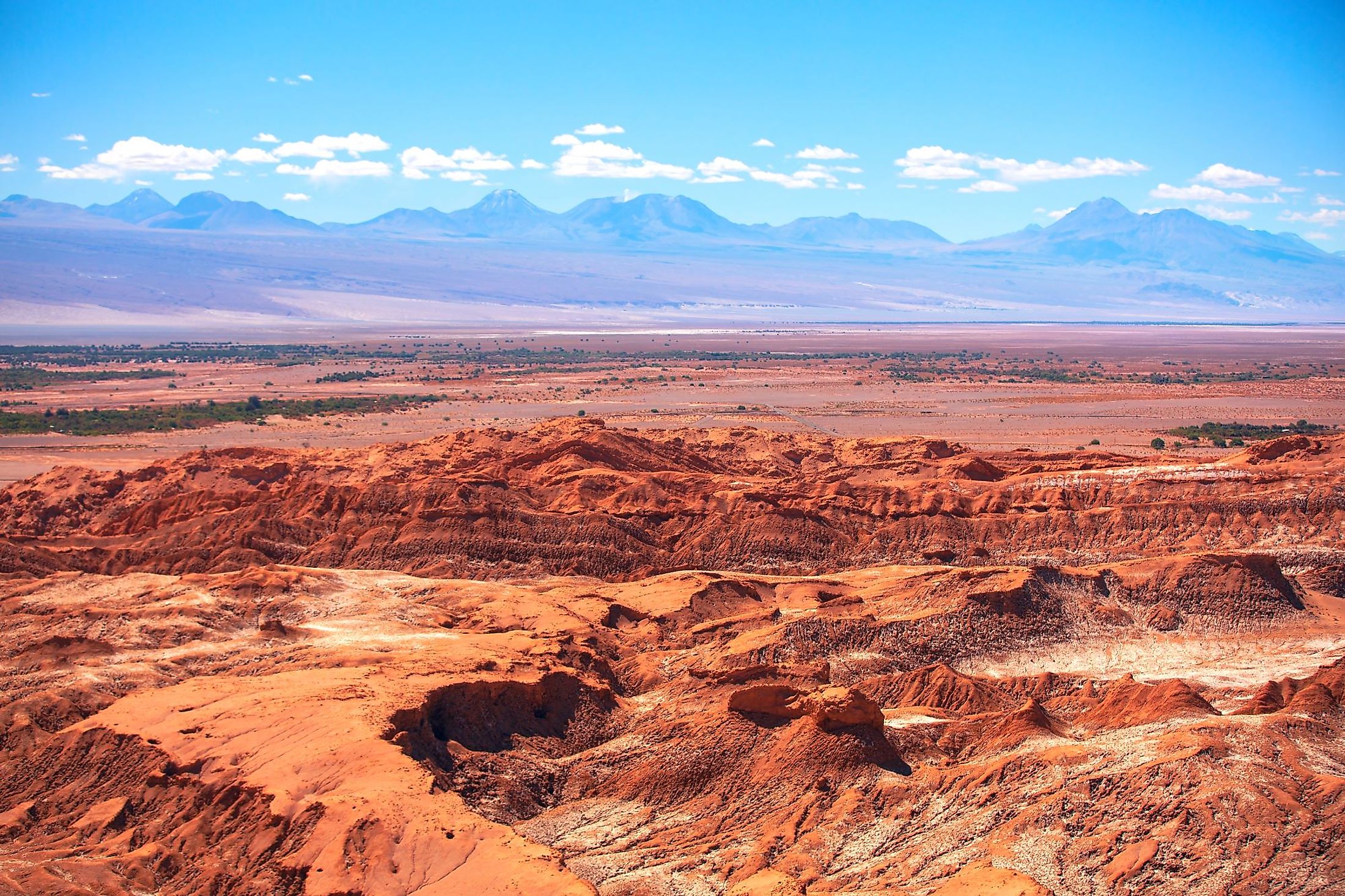
Atacama Desert
When one thinks of deserts, a secluded area isolated from society comes to mind. Well, that is not the case for the Atacama Desert. Instead, picture a collision of seawater and dunes because that is what it looks like on its coastal fronts.
Geography Of Atacama Desert
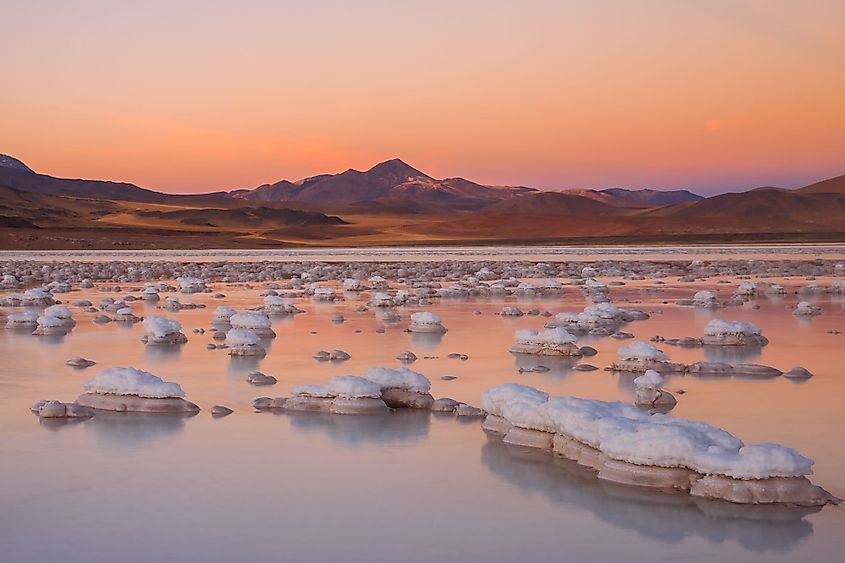
Previously part of the Pacific Ocean seabed, the Atacama Desert landscape consists of caked salt deposits called playas which stretch for miles and can be up to 1.6 feet thick in some places. This geologic wonderland is said to be the driest nonpolar desert on Earth, with its highest point reaching almost 22,615 feet at Ojos del Salado. This is due to its less than one-millimeter yearly rainfall, making it fifty times drier than Death Valley and much drier than the famous Sahara Desert.
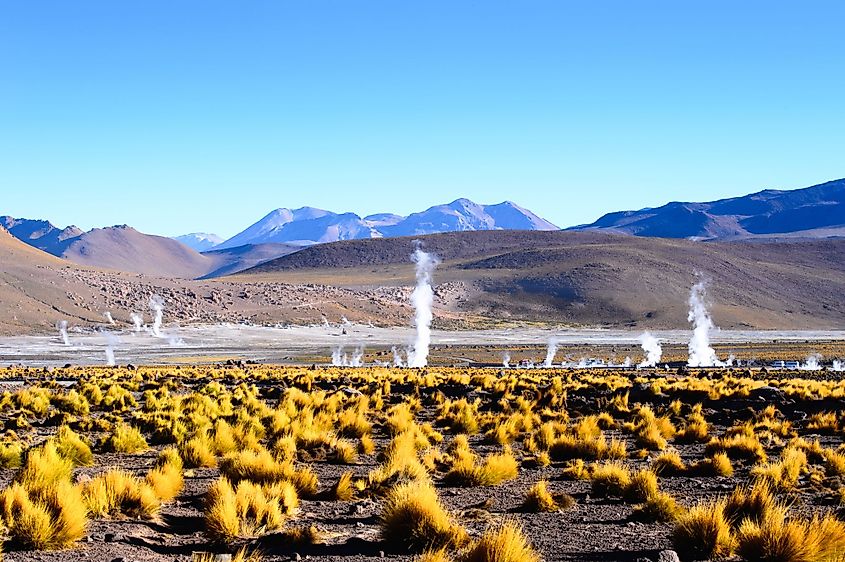
The Atacama Desert stretches across 600 to 700 miles of land between the spectacular Andes Mountains and the Cordillera de la Costa mountain range. Argentina, Peru, and Bolivia border the Atacama Desert. The powerful gusts of wind carry the speckled stones found on its surfaces across the playas much like the tumbleweed in old cowboy movies. Its nitrate belt stretches 435 miles and is 12 miles wide. The Atacama Desert plateau, elevated at 16,570 feet and located in Chile's northeastern frontier with Argentina and Bolivia, is probably the ideal place to explore the solar system's secrets with so many giant telescopes already stationed there. It also hosts 12 volcanoes mainly located in the western outliers of the Andes, most notable of which is the perfectly symmetric Licancabur sitting pretty at 19,420 feet and 80 geysers that spit out water over 10 meters high.
Climate Of Atacama Desert
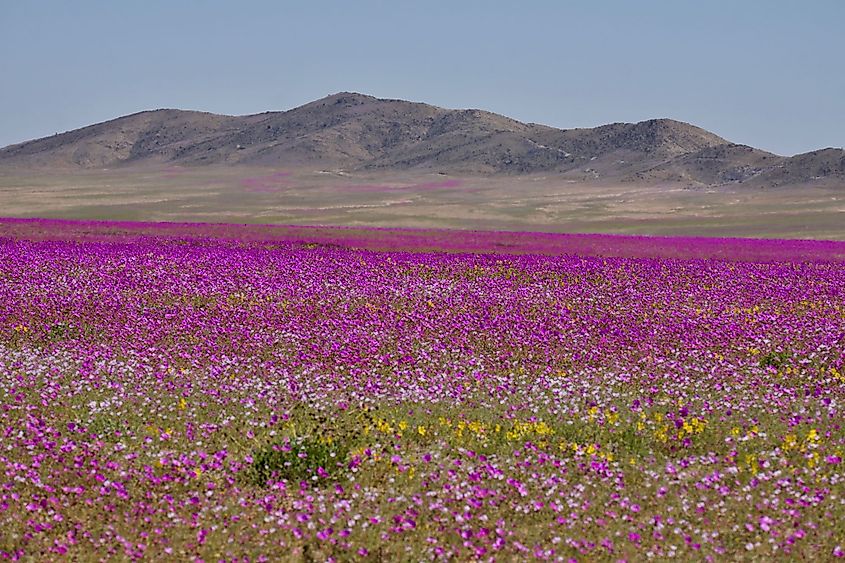
The Atacama Desert receives almost no rainfall. This is due to its location between the Andes, which blocks the humid air from the Amazons and the Coastal mountain range. In a miraculous turn of events, torrents of rain do fall on the barren land every couple of years or so, consequently sprouting colorful wildflowers as far as the eye can see, notably in 2011, 2015, and 2017. Although marvelous to look at, this wildflower awakening means the termination of microbial life as they get soaked in water and end up physically bursting into non-existence. This happens because these specific microbes are used to the desert's hyperarid core and react poorly when exposed to water. In addition, the area has numerous underground water reserves accumulated over thousands of years. Weirdly enough, scientists suspect that these storm outbursts might become more frequent in the future, thus rendering the desert wetter contrary to logic.
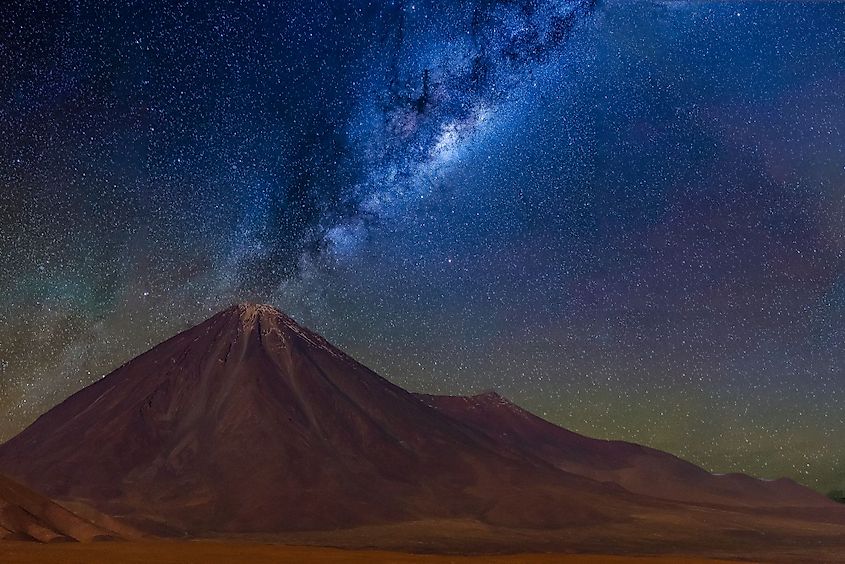
Another phenomenon that occurs in the arid desert is the formulation of fog and stratus clouds (without rain) which is a direct product of the upwelling effect the nearby ocean has. The average temperature in summer reaches 66 °F, which is significantly low for desert standards. With more than 330 cloud-free nights away from pollution, amateur and professional astronomers from across the globe flock to the Atacama Desert to catch a glimpse of the starry night and all the wonders it has to offer. The landscape here is so extra-terrestrial that it has been dubbed Mars on Earth and is used for numerous experiments and testing. A network of 66 telescopes run by the Republic of Chile and other alliances runs the Atacama Large Millimeter Array, also known as ALMA. ALMA is the most significant project as it helped make the first image of a black hole. In addition, another telescope known as the Very Large Telescope (VLT) is also found in the area and has gathered plentiful data on distant exoplanet atmospheres.
History Of Atacama Desert
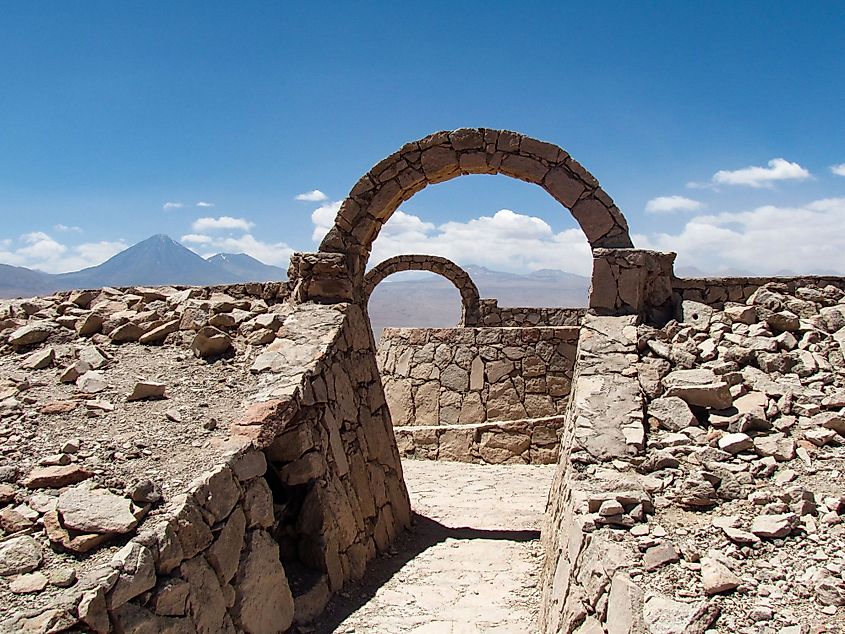
One would assume that such a harsh environment would not be hospitable to any life form, let alone humans. However, that is not the case for the Atacameño people, an almost extinct Indian culture with a count of 200 in total today. Aside from the Atacameño people, a vast network of races and cultures inhabit the place. Newcomers started to arrive in the area in the late 1800s. Shortly after that, thousands of workers began to migrate to the desert due to the abundance of white gold. A natural nitrate is used to make anything from fertilizers to explosives. Today, over 1 million people live in the Atacama Desert, which is surprising given that the place is often compared to being "hell on Earth." This arid desert is the oldest on Earth and has experienced such conditions for 150 million years. However, scientists speculate that its inner core has been hyperarid for the past 15 million years. That is due to its unique geological composition and atmospheric conditions. During much of the 19th century, Chile, Peru, and Bolivia fought for the right to claim the area due to its rich mineral resources, particularly its sodium nitrate deposits located mainly inland from Iquique and northeast Antofagasta. Although most sites belonged to Peru and Bolivia, the Chilean and British controlled the mining industry. Eventually, Chile gained permanent ownership of the area after signing the Treaty of Ancón in 1883. This was a turning point for Chile, and the land acquisition proved significant as it helped the country get by during the economic depression by systematically mining the Nitrate deposits after the mid-19th century.
Wildlife In The Atacama Desert
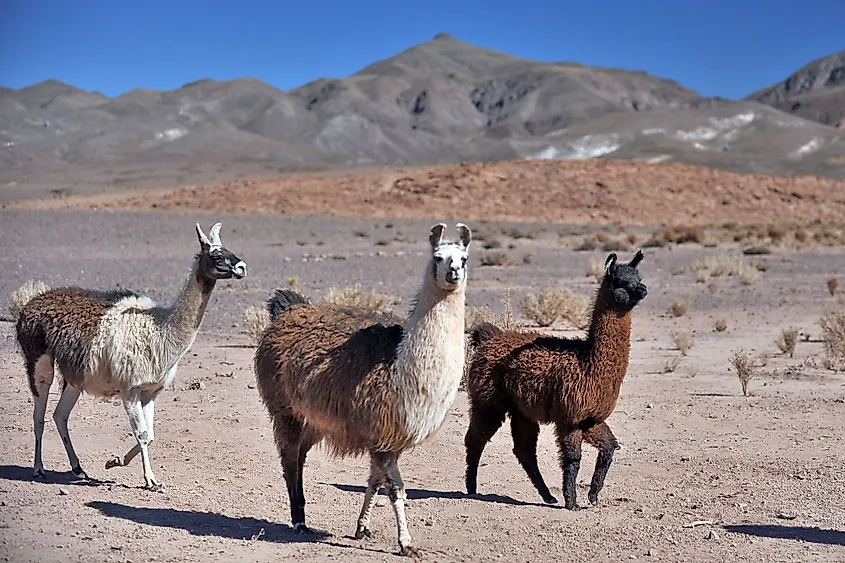
It would be presumptuous to think that since the area does witness any rainfall, it would be absent of vegetation or animal life. Surprisingly, its coastal areas are blessed with vegetation and wildlife, including llamas, mice, grey foxes, deer, vicunas, and alpacas. Colonies of penguins, pelicans, seals, and cormorants can be found along the coast. Some birds hover around the area, such as the puna miner, the black-throated flower-piercer, lesser rhea, Tamargo one bill, Andean swallow, Chilean woodstar, and giant Humminbird. As for flora, some farming is done at San Pedro de Atacama. Lemons are grown at Pica; potatoes and alfalfa are grown near Chuquicamata. The permanent residents, however, have to be the adapted microbial organisms that only seem to perish if exposed to water.
Tourism In The Atacama Desert
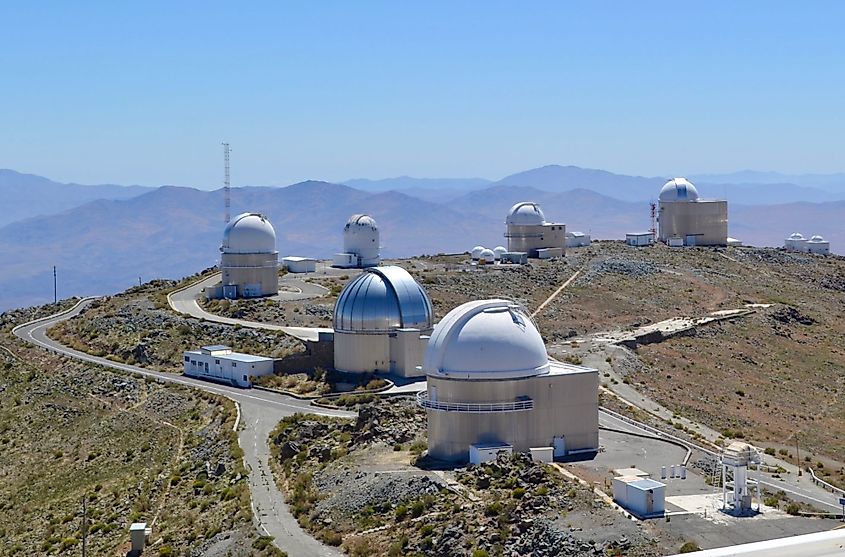
Over 36,000 tourists per year flock from around the globe to witness this enchanted place's magic. Mostly visiting its three largest coastal cities, Iquique, Arica, and Antofagasta, tourists come to experience the astronomical phenomenons firsthand and the desert's number of observatories. The sites include the European Southern Observatory, La Silla Observatory, Paranal Observatory, Cerro Tololo Inter-American Observatory, Mamalluca Observatory, and Pangue Observatory.
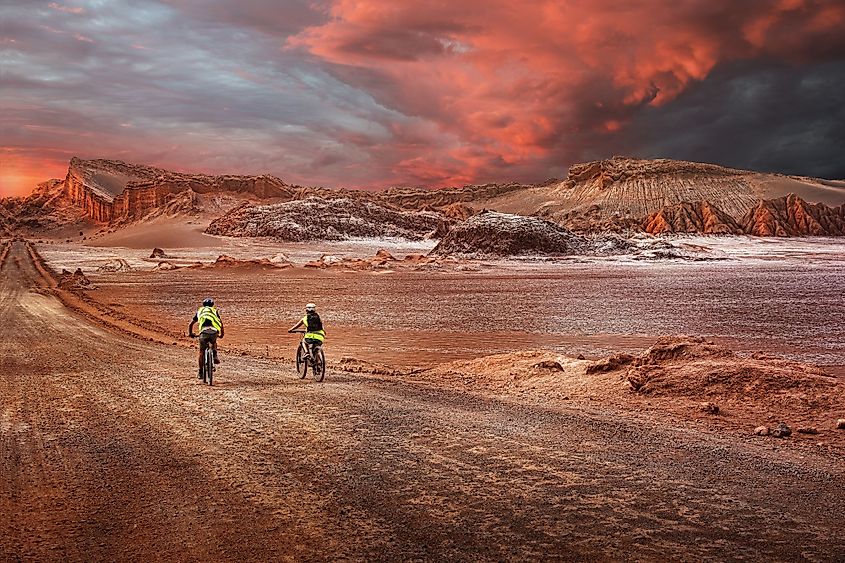
Suppose stargazing is what you are looking for, well. In that case, the Atacama Desert offers a pleasant cloud-free climate all year round and excellent light transparency, attracting photographers who flock to get the perfect shot of its landscape and the starry night. If barren was ever considered beautiful, it indeed is because of the Atacama Desert and its enchanting landscape that mesmerizes anyone who looks at it. This Mars lookalike is worth checking out if you ever find yourself in South America. Bucket list worthy, the Atacama Desert is a must-see that will surely transport you to outer space without having to qualify as an astronaut.











